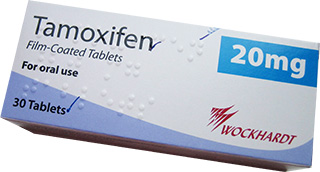Overview of Tamoxifen
Tamoxifen is a vital medication in the management of breast cancer, categorized as a selective estrogen receptor modulator (SERM). It works by binding to estrogen receptors in breast tissue, effectively blocking estrogen’s role in promoting the growth of hormone receptor-positive breast cancer cells. This action makes it an essential treatment option for both premenopausal and postmenopausal individuals.
Indications for Use
Tamoxifen is primarily indicated for treating hormone receptor-positive breast cancer. Its applications include:
- Adjuvant therapy for patients with node-positive breast cancer.
- Treatment following surgery and radiation for ductal carcinoma in situ (DCIS).
- Prevention of breast cancer in individuals at high risk.
- Treatment of oligospermia in males, showcasing its versatility beyond breast cancer management.
Dosage and Administration
The typical dosage of Tamoxifen ranges from 20 to 40 milligrams daily, depending on the treatment needs and patient response. It can be taken with or without food. For reducing breast cancer incidence in high-risk patients, a standard dose of 20 mg daily is often prescribed.
Dosage Table for Tamoxifen
| Dosage Strength | Administration Guidance | Additional Notes |
|---|---|---|
| 20 mg | Take once daily | Standard dose for prevention in high-risk patients |
| 20-40 mg | Take once daily or in divided doses | Dose may be adjusted based on treatment response and clinical condition |
Key Usage Instructions:
- When to Take: Tamoxifen should be taken at the same time each day to maintain consistent blood levels of the medication.
- How to Take: The medication can be taken with or without food. If you experience stomach upset, it may help to take it with food.
- Duration of Treatment: In the context of adjuvant therapy for breast cancer, the treatment duration is typically recommended for 5 to 10 years, depending on the patient’s risk factors and response.
Additional Information:
- Patient Counseling: It is crucial for patients to understand the importance of adhering to their prescribed dosing schedule and to discuss any potential interactions with other medications they are taking.
- Monitoring and Follow-Up: Regular follow-up visits with a healthcare provider are essential to monitor the medication’s efficacy and manage any side effects. Patients should report any unusual symptoms such as new breast lumps, unusual vaginal bleeding, changes in vision, or signs of blood clots (e.g., pain in the legs, shortness of breath).
- Bone Health Monitoring: Because Tamoxifen can impact bone density, monitoring bone health through periodic scans is advised, especially for patients at risk of osteoporosis.
- Fertility and Contraception Counseling: Women of childbearing age should discuss fertility and effective contraception methods due to the risks Tamoxifen poses during pregnancy.
Contraindications and Warnings
Tamoxifen should not be used by individuals with allergies to the drug, those on treatments like warfarin, or those undergoing therapy for conditions like deep vein thrombosis. It is also contraindicated in individuals planning to become pregnant due to the potential risk to the fetus. Key warnings include an increased risk of endometrial cancer, menstrual irregularities, and blood clots, particularly in post-surgical settings or during extended immobilization. The drug may also elevate the risk of stroke and other cerebrovascular incidents.
Drug Interactions
The effectiveness of Tamoxifen can be compromised by strong inhibitors of the CYP2D6 enzyme, such as certain antidepressants. Additionally, caution is advised when used with anticoagulants and other drugs that increase the risk of bleeding.
Adverse Reactions
Patients may experience a range of side effects, from common issues like hot flashes, vaginal discharge, and menstrual irregularities, to more severe conditions such as visual disturbances, thromboembolic events, and changes in the endometrium, including cancer.
Clinical Pharmacology
Tamoxifen competes with estrogen for binding to estrogen receptors in various tissues. It is metabolized in the liver, primarily through the CYP3A4, CYP2D6, and CYP2C9 isoenzymes, resulting in active metabolites that contribute to its therapeutic effects.






Reviews
There are no reviews yet.